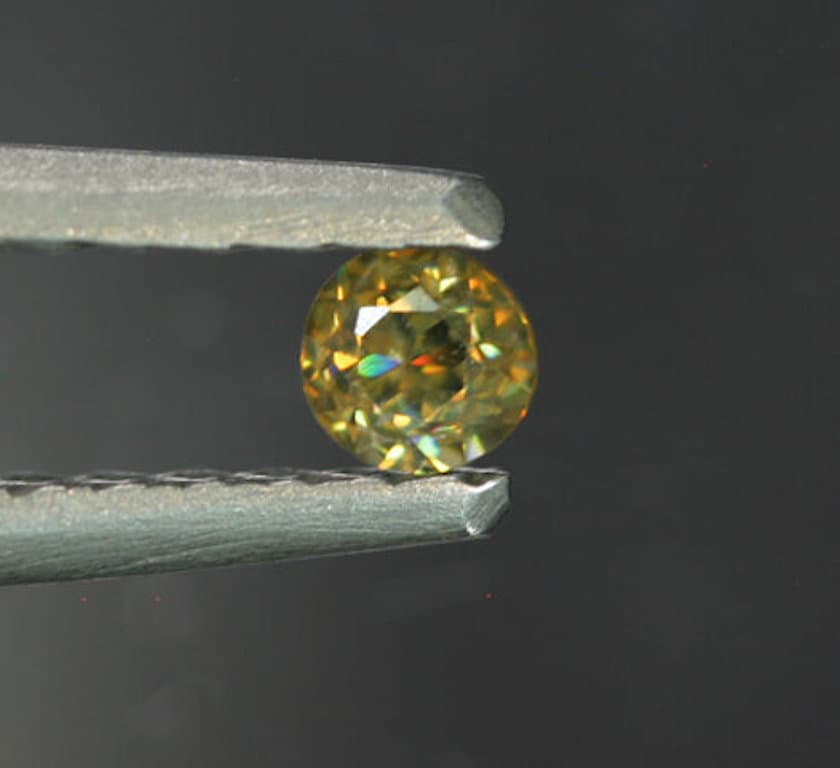Anatase Value, Price, and Jewelry Information
Anatase occurs in many beautiful colors, such as deep indigo and amber yellow. However, these rare gems are seldom transparent and are usually found as very small crystals. They're hardly ever faceted, except as curiosities for gem collections.
3 Minute Read
Anatase occurs in many beautiful colors, such as deep indigo and amber yellow. However, these rare gems are seldom transparent and are usually found as very small crystals. They’re hardly ever faceted, except as curiosities for gem collections.
Start an IGS Membership today
for full access to our price guide (updated monthly).Anatase Value
What is Anatase?
Anatase, brookite, and rutile are polymorphous minerals. They share the same chemical formula, TiO2 (titanium dioxide), but have different crystal systems and other gemological properties.
Xanthitane is a soft, friable (crumbly), yellow-colored sphene (titanite) pseudomorph of anatase. Pseudomorphs are minerals that change chemistry without changing their crystal form. In this case, from TiO2 to CaTiSiO5.
You might find references to anatase as "octahedrite." The name comes from the "double pyramid" shape typical of many anatase crystals. However, despite this occasional appellation, anatases don't form true octahedrons nor belong in the isometric crystal system.
Is Anatase a Good Jewelry Stone?
You'll more likely find anatase in a mineral collection than a jewelry collection. Due to this gem's perfect cleavage and hardness of 5.5 to 6, protective settings and occasional wear would be advisable for ring use. Jewelry such as pendants, brooches, and earrings would make excellent choices for this gem.
Transparent gems could display anatase's birefringence and beautiful, high dispersion, which exceeds even that of diamond. However, transparent crystals tend to have darker colors, which can mask the gem's dispersion. As jewelry stones, darker, opaque material might showcase its adamantine to metallic luster. Very dark faceted gems may appear unattractive.
Identifying Characteristics
Optical Properties
Anatase's refractive indices (RI) vary extremely, depending on temperature and wavelength.
Some dark-colored crystals with small 2V may have biaxial optic character.
Transparent, faceted gems may show birefringent doubling.
How Can You Distinguish Anatases, Rutiles, and Brookites?
Of the three polymorphous titanium dioxide gems, anatase is the rarest.
You may encounter faceted rutile, especially synthetic rutile, more commonly than faceted anatase. The deeper color ranges of these two gems overlap, and they actually both have tetragonal crystal structures. However, rutile has a higher specific gravity (SG) and greater hardness. Rutile's optical properties also differ. For example, it has a uniaxial (+) optic character.
Rare faceted brookites have some color overlap with anatases (but rarely blue) and share the same hardness. However, orthorhombic brookite has different optical properties, including a higher birefringence. It also has a higher SG.
Distinguishing Anatases from Other Similar Gemstones
Some more popular gemstones that share the same hardness and color range of anatases include transparent scapolites and opaque sodalites (blue). However, both these gems have luminescent properties, unlike anatases, as well as other distinguishing characteristics.
For more information on gem identification techniques, read "The Art and Science of Identifying Gemstones."
Are There Any Synthetic Anatases?
Anatase can act as a photocatalyst. For example, if exposed to light while underwater, anatase absorbs photons, which excites electrons in its atomic structure. In turn, these electrons split the water molecules into hydrogen and oxygen.
Since such a reaction has many possible applications, such as disinfecting water, cleaning oil spills, and creating solar cells, scientists have synthesized anatase, including crystal forms, for research purposes. However, there is no known jewelry use for this synthetic material.
Do Anatases Receive Gem Enhancements?
No known gem treatments.
Where is Anatase Found?
The Alpine regions of Switzerland produce gem material. Diamondiferous gravels in Brazil also yield gem-quality crystals.
Other notable crystal sources include the following locations:
- United States: Arkansas; California; Gunnison County, Colorado; Massachusetts; North Carolina; Virginia.
- United Kingdom: Cornwall; England; Wales.
- France; Italy; Myanmar; Norway; Pakistan; Russia; Spain.
Stone Sizes
Exceedingly rare, faceted gems almost always weigh less than 1-2 carats. However, cut gems as large as approximately 6 carats are known.
Caring for Your Anatase Jewelry
Store anatases separately from harder gems to avoid contact scratches. Clean them with a soft brush, mild detergent, and warm water. For more care recommendations, consult our gemstone jewelry cleaning guide.
Joel E. Arem, Ph.D., FGA
Dr. Joel E. Arem has more than 60 years of experience in the world of gems and minerals. After obtaining his Ph.D. in Mineralogy from Harvard University, he has published numerous books that are still among the most widely used references and guidebooks on crystals, gems and minerals in the world.
Co-founder and President of numerous organizations, Dr. Arem has enjoyed a lifelong career in mineralogy and gemology. He has been a Smithsonian scientist and Curator, a consultant to many well-known companies and institutions, and a prolific author and speaker. Although his main activities have been as a gem cutter and dealer, his focus has always been education.
International Gem Society
Related Articles
Chambersite Value, Price, and Jewelry Information
Nephrite Jade Value, Price, and Jewelry Information
Creedite Value, Price, and Jewelry Information
Purpurite Value, Price, and Jewelry Information
Never Stop Learning
When you join the IGS community, you get trusted diamond & gemstone information when you need it.
Get Gemology Insights
Get started with the International Gem Society’s free guide to gemstone identification. Join our weekly newsletter & get a free copy of the Gem ID Checklist!
